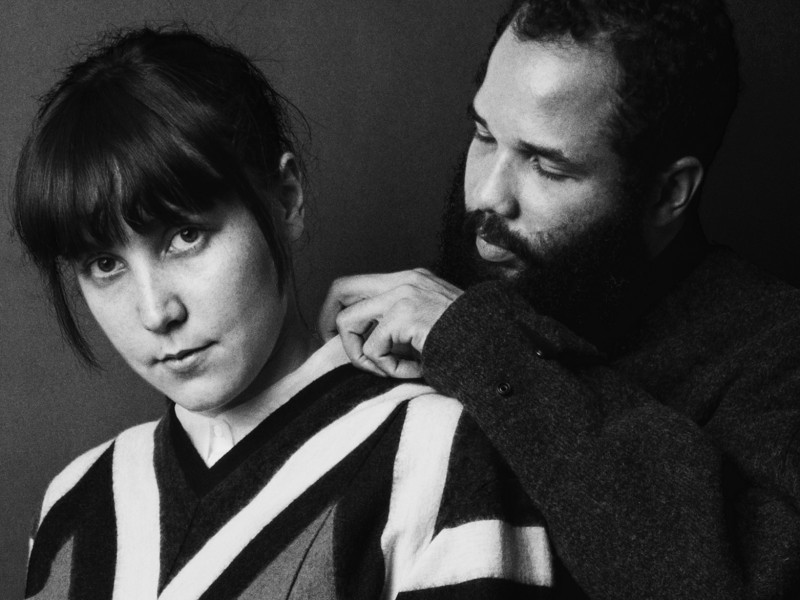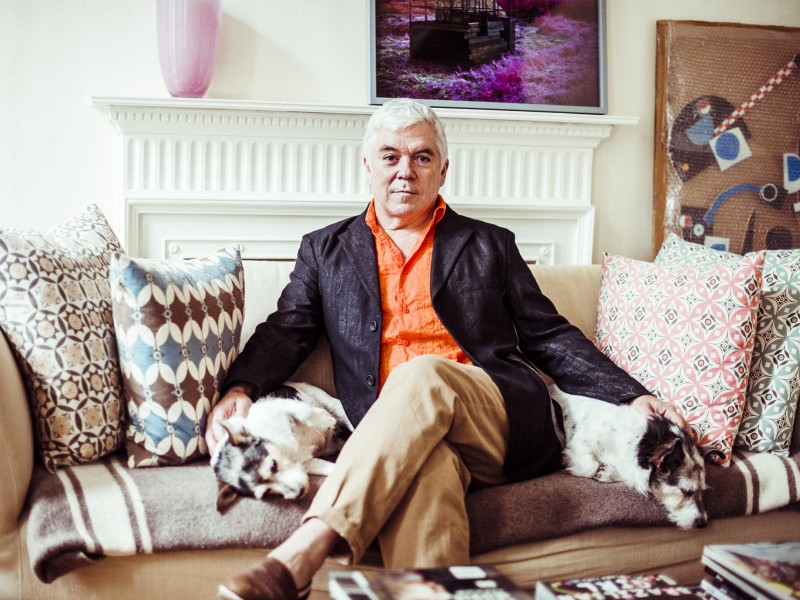The Costume Institute was formally housed under the Egyptian galleries at the Metropolitan Museum of Art (Met) in New York, which were filled with devotional sculpture and ancient weaponry. When fashion became a blood sport of its own, female members of high society began donating their ageing couture gowns for public display. Some of the castaways ended up at the Costume Institute, which had been formally established in 1946 to elevate fashion into an art form. While a Vionnet dress never enjoyed the same attention as a Renoir, and certainly not the academic intrigue of a totem from Cleopatra’s court, it was perhaps by seniority, that the Costume Institute would trump its institutional colleagues by virtue that fashion does indeed predate the wheel.
Today, the reinvigorated and much celebrated Costume Institute is led by British born curator Andrew Bolton. He has been responsible for megawatt shows including 2011’s Alexander McQueen: Savage Beauty, and last year’s China: Through the Looking Glass, which most notably broke all attendance records for the department. The latter was documented in Andrew Rossi’s 2016 film, The First Monday in May. The film followed Bolton’s wary steps through strategy planning, board meetings, archives of haute couture, and the Chinese mainland, where native journalists interrogated the Met’s show as a piggyback on Orientalist tradition. Bolton accepted the challenge with a martyr’s resolve. “I was really ambivalent about my role [in the film],” he told Charlie Porter at the Financial Times. “I just thought it was going to be amazing for the museum”.
Bolton was born in 1966, in Lancashire. His father worked in the newspaper business and his mother was a housewife. He described school and academia as his comfort zones. After getting his undergraduate degree in anthropology, he spent his savings travelling through Asia, which inspired his decision to gain a master’s in non-Western art. He studied on a full scholarship at the University of East Anglia, then, following a six month stint at a Cambridge museum, accepted a curatorial assistant role at the Victoria & Albert, in London, the world’s largest repository of decorative arts. In 2002, he was invited to join Harold Koda at the Met. When Koda retired as the Costume Institute’s chief curator in early 2016, Bolton became his successor. “You’re in the catbird seat of fashion,” Koda told the New York Times. “You can observe and comment on contemporary fashion without any of the risks that designers, merchants and editors have to go through.” A position that Bolton now appears to relish.
Bolton entered the world just in time for punk. As a boy, he admired the culture without indulging any of its grudges or vices. His sister dated a punk musician and he recalled trips to London where he would walk down streets abound with ruffians. When the teenage Bolton aspired to their dress, an elfin physique exposed his impostures. “I wore it too self-consciously,” he told Suleman Anaya, from The Business of Fashion, “so I embraced my inner nerd.” In 2013, the nerd unleashed Punk: Chaos to Couture to an unsuspecting civilian population. He explored punk’s DIY legacy in four themes (hardware, bricolage, graffiti, and destroy) that demonstrate how radical dressers campaigned against economic stagnation and social anomie. Punk’s first wave may have died in 1979, when Margaret Thatcher entered office, but Moschino, Comme des Garçons and Zandra Rhodes flourished in the 1980s. Bolton summoned their wistful, lushly violent wares to be displayed at the Met. In a press video, he said he had omitted clothing by “actual punks” for fear of the museum resembling the Rock and Roll Hall of Fame, which occupies a modernist pyramid in Ohio.
The Costume Institute currently holds 35,000 articles of historic fancy dress, beginning from the 15th century right through to its zenith in 20th century haute couture. Juggernauts like Dior and Balenciaga—both honoured with retrospectives at the Met—dominated the genre, but couture’s exclusive aura owes much to the immense feminine power that keeps it buoyant. It is sewn, modelled and for the most part, financed by women. This may explain fashion’s subordinate position in the Met’s curatorial hierarchy. Before Bolton’s tenure, visitors were used to overlooking fashion, instead focusing on fine art.
And while in art the Pre-Raphaelites regaled in hair fetish, Jackson Pollock scandalised the academy with his seminal drips, and impressionists like Degas shared common ground to that of the couturier—obsessing over women’s bodies while being indifferent to their comforts—their works still received lofty treatment. Perhaps in vengeance, women would go on to make dressing an art form while art fraternities would continue to make women a punchline.
The curator’s key role, however, is to make legible the stories that silenced clothes have to tell. Bolton sees fashion as the most ‘democratic’ art form because it seeks communion, not connoisseurship. “We all wear it, so we all have an opinion about it,” he told Charles Porter. “It’s unlike painting or sculpture, where people are almost afraid to voice their opinion because they don’t feel like they know enough.” His wishful utopianism doesn’t deflate the eminence of the clothes. In 2012, for example, Bolton co-curated Schiaparelli and Prada: Impossible Conversations and lifted two of fashion’s maternal figureheads to the dais. Schiaparelli married sober concepts to surrealist kinks, assuring her position as Chanel’s main rival. While Miuccia Prada continues to make ecstatically droll clothes in synthetic fabrics, and sells them at formidable prices to her devotees—she is everyone’s rival.
Bolton’s approach to curation is uniquely thorough in scholarship. To enliven the women’s displays, he referenced the work of Umberto Eco, the Italian semiotician, whose books, On Beauty and On Ugly, critique the history of the divine and the depraved. Bolton’s intention was to expose the limits of imperial beauty, a Western invention, while flaunting his two subjects as renegades who upset the very idea of what a beautiful woman is supposed to be. The New Yorker called the show a triumph of “invincible female self-possession”.
Long before Bolton entered the scene, Schiaparelli was the pioneer who bridged the two island cultures of art and fashion. Her main accomplice was Salvador Dalí, who painted the scarlet crustacean in Schiaparelli’s famous Lobster Dress of 1937. Art and fashion were unified once more with China: Through the Looking Glass—Bolton’s most audacious project. The concept, he noted to Suleman Anaya, was not China in its singularity but “the fantasy of China, one that is shared between the East and the West”. John Galliano had robes from his Diorient Express collection on display and in a show of pathos, Rossi filmed Met specialists lifting the dresses out of their tissue lined sarcophagi, unfurling them for inspection on a metaphoric embalming table, replete with feathers and sequins quivering under the weight of human breath.
Bolton believes that part of his job is to document cultural trends as they unfold, in addition to the people responsible for shaping them. Curators typically shy away from such an activist role, but Bolton was careful to include a select number of Chinese designers in China: Through the Looking Glass, if only to canonise their virtuosity. One of them was Guo Pei, who famously dressed Rihanna in a satin cape of sunflower yellow for the Met Ball so that we could watch her descend the grand staircase with fiery, almost deistic nerve. Pei didn’t adopt any of the recognisable shapes of her native dress, instead co-opting Western silhouettes, slathering them with Eastern symbols—cranes, dragons, floral scrolls—in a method that Bolton called “auto-Orientalism”. Shortly after the opening, Pei announced a collaboration with MAC cosmetics. She was also invited by the Chambre Syndicale de la Couture to present her collection as a guest member in Paris.
Bolton is particularly averse to technology, as he explained to Charles Porter, recounting that gadgets are “not that beautiful to look at”. But when he doesn’t like something, he works out his antipathy with a surplus of curiosity. Bolton’s 2016 blockbuster, Manus x Machina: Fashion in an Age of Technology, attempted to reconcile the tension between man and machine. The first practical automatic sewing machine was invented in the early 1850s. A few years later, Charles Frederick Worth established himself as the world’s first haute couture designer. “Was haute couture a reaction to the anxiety of the democratic possibilities of the sewing machine?” questioned Bolton. The Met’s galleries of technically prodigious clothes showed them as bedfellows. New extremists like Iris van Herpen, who coated a taxidermic gull’s head in a whip of silicon, shared the floor with old mystics like Christian Dior, whose Junon petal dress hybridised silk and plastic as complementary media.
Koda and Bolton both refute the notion that commerce makes art less pure. Indeed, recent Costume Institute exhibitions have attracted sponsors of titanic proportions. Amazon was listed in the 2012 catalogue as a primary partner for the Impossible Conversations show, though it failed to mention the web giant’s new plans to sell high fashion online. Manus x Machina was sponsored by Apple, an edenic union that rankled the purists. “Fashion has always been the first to embrace technology, right from the get go,” Bolton told The Business of Fashion. But he balks at the idea of an exhibit that resembles an elaborate sales pitch. “Designers who put on retrospectives that are basically trunk shows … it just puts fashion exhibitions back years and for so long we've been establishing it as a serious academic discipline,” he told The Australian.
Bolton is something of a cipher in his industry and chooses to keep quiet as tempests of gossip surround his work. One suspects he’s a voyeur deep down, preferring to observe from the periphery, where he seems to be discovering the vital truth of his vocation.
Related Features
-
126
-
-
-

